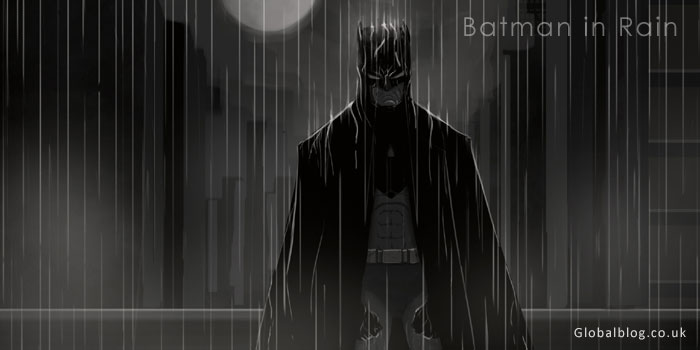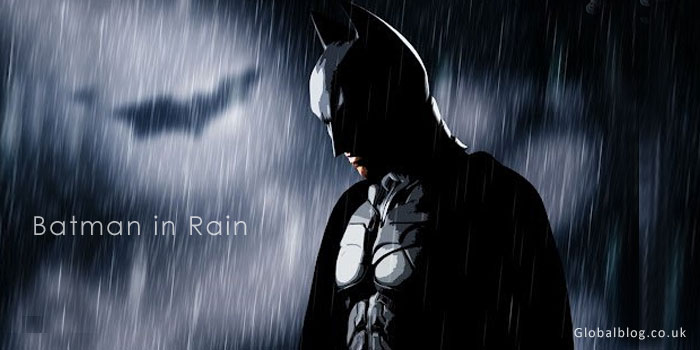Introduction to the Iconic Scene
Rain has a unique way of transforming the atmosphere, and when it falls on Gotham City, magic happens. The iconic image of Batman cloaked in shadows and rain is more than just a striking visual; it’s a powerful narrative tool that shapes how we perceive this legendary character. This scene resonates with audiences worldwide, evoking emotions that linger long after the credits roll. In this post, we’ll dive deep into what makes “Batman in Rain” such an unforgettable moment in cinematic history. From its storytelling impact to its technical brilliance, let’s explore why this scene continues to inspire filmmakers and fans alike.
The Impact of Rain on Storytelling
Rain has a remarkable ability to shape narratives. It creates mood and evokes emotion. The sound of raindrops can be soothing or foreboding, enhancing the viewer’s experience.
In many stories, rain serves as a backdrop for pivotal moments. Characters confront their deepest fears or make life-changing decisions as the sky pours down. This natural element often signifies transformation or catharsis.
Moreover, rain visually alters scenes, adding texture and depth. Shadows dance on wet pavement while colors become more vibrant under gray skies.
The unpredictability of weather parallels human emotions, chaotic yet beautiful. Each drop symbolizes burdens lifted or new beginnings waiting to emerge.
As audiences watch Batman in rain-soaked Gotham City, they feel his isolation intensify. Rain amplifies tension and underscores themes of struggle and resilience, a powerful tool in storytelling that resonates across genres.
The Symbolism Behind Batman in Rain
The rain in Batman’s world serves as a powerful metaphor. It mirrors his internal struggles and the darkness he faces. Each drop symbolizes sorrow, reflecting Gotham’s turmoil.
When Batman stands amidst pouring rain, it signifies both isolation and resilience. The water washes away superficiality, revealing his raw vulnerability underneath the cape.
Moreover, rain enhances the atmosphere of mystery that surrounds him. Shadows dance on wet surfaces, amplifying tension and creating an enigmatic presence.
This setting also represents rebirth, a chance for renewal despite overwhelming odds. Just as nature rejuvenates after a storm, so does Batman rise stronger after each battle?
The intersection of man and weather deepens our emotional connection to this iconic character. He becomes not just a symbol of justice but also an embodiment of human complexity amidst chaos.
The Technical Aspects of Filming in Rain
Filming in rain presents unique challenges and opportunities for directors. The texture of the droplets can add a dramatic flair to scenes, enhancing mood and atmosphere.
Cinematographers often utilize specialized equipment to capture these moments effectively. High-speed cameras can slow down raindrops, creating mesmerizing visuals that resonate with audiences.
Lighting is crucial as well; backlighting can make each drop sparkle like diamonds against the dark backdrop.
Sound design plays a major role, too. The rhythm of rain hitting surfaces adds an auditory layer that deepens emotional engagement.
Actors must navigate slippery sets while staying in character. This requires exceptional skill and focus from everyone involved.
Careful planning is essential to avoid disruptions during shoots. Weather conditions need constant monitoring, ensuring safety while maximizing artistic impact.
The result? A visually stunning experience that leaves a lasting impression on viewers everywhere.

Other Iconic Movies Featuring Rain Scenes
Rain has a magical way of transforming scenes in cinema. It can evoke deep emotions and add layers to storytelling.
Take “Blade Runner,” for example. The relentless rain enhances the film’s dystopian atmosphere, making it feel even more alien and haunting.
Then there’s “The Shawshank Redemption.” The iconic scene where Andy Dufresne stands in the downpour symbolizes freedom and renewal, etching itself into our memories forever.
“Singin’ in the Rain” showcases how joy can emerge amidst a storm. Gene Kelly’s dancing through puddles perfectly captures pure happiness against a rainy backdrop.
Even classics like “Casablanca” utilize rain to amplify tension during pivotal moments, creating an unforgettable cinematic experience.
These films exemplify how rain serves as both a visual device and emotional catalyst, leaving audiences captivated long after the credits roll.
How Batman in Rain Changed Movie-Making
The portrayal of Batman in rain has transformed cinematic storytelling. The visual impact of raindrops cascading down the iconic cape added depth to the scenes, evoking emotions that resonate with audiences.
Directors began to see rain as more than just a weather element. It became a powerful narrative device that enhanced mood and tension. This shift encouraged filmmakers to experiment with lighting and cinematography, creating visually stunning sequences.
Rainy nights in Gotham inspired new techniques in set design and special effects. Filmmakers learned how water could be manipulated on screen—reflecting light, heightening drama, or emphasizing loneliness.
As movies evolved, this technique influenced various genres beyond superhero films. Directors now integrate weather elements intentionally for emotional resonance, thanks largely to the groundbreaking moments created by Batman’s rainy escapades.
Conclusion: Batman in Rain
Batman in Rain encapsulates the essence of what it means to be a hero grappling with darkness and despair. The interplay of rain enhances the emotional weight of Bruce Wayne’s journey, portraying his internal struggles in a visually striking manner. This iconic scene serves as more than just an aesthetic choice; it is woven into the very fabric of storytelling.
As audiences continue to revisit these scenes, they find new meanings each time. The impact of “Batman in Rain” remains profound within filmography and pop culture alike. With its rich symbolism and technical brilliance, it’s clear why this moment continues to resonate deeply with viewers around the world.
